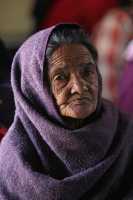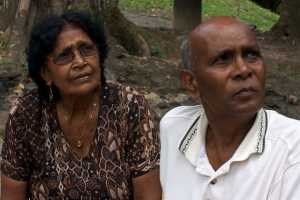MedicalResearch.com Interview with:
Jay Olshansky, Ph.D.
Division of Epidemiology and Biostatistics
School of Public Health University of Illinois Chicago
Chicago, Illinois
MedicalResearch.com: What is the background for this study?
Response: In 2011 I published the first scientific evaluation of the observed longevity of all of the U.S. presidents. Since then, I've been contacted by the media every four years to comment on the ages of the presidential candidates. This is relevant because the number of older candidates is on the rise, and their ages are getting higher. A reporter from the Washington Examiner contacted me this time around to comment once again, and wanted to know whether I was planning on doing another analysis. When I looked at the list of candidates that were much older this time around, I thought it would be a good idea to see what science had to say about the health and longevity prospects of all of the candidates. This way we could at least offer a scientific explanation of whether age should be relevant at all when choosing a presidential candidate.
(more…)
Aging, Author Interviews, Cognitive Issues, Gender Differences, Hormone Therapy, JAMA, Menopause, Weight Research / 05.07.2019
Brain Aging in Women Linked to Obesity and Lower Estradiol Levels
MedicalResearch.com Interview with:
Rachel Zsido
PhD student
Department of Neurology
International Max Planck
MedicalResearch.com: What is the background for this study?
Response: We integrated measures of brain network structure, visceral adipose tissue (VAT), serum estradiol levels, and cognitive performance from 974 participants in order to shed light on potential mechanisms underlying cognitive health. We believe it is imperative to assess sex-specific risk trajectories in brain aging and cognitive decline, especially given the known sex differences in both VAT accumulation patterns and estradiol fluctuations across the lifespan.
Thus, we aimed to answer three questions in men and in women:
1) Does visceral adipose tissue exacerbate the association between age and brain network structure,
2) Does estradiol mitigate the negative association between VAT and brain network structure, and
3) What does this imply for healthy cognitive aging in men and women? (more…)
Author Interviews, Geriatrics, JAMA, Ophthalmology, University of Michigan / 21.06.2019
Most Older Adults Have Eyes Examined, But Disparities Remain
MedicalResearch.com Interview with:
Joshua R. Ehrlich, MD, MPH
Assistant Professor, Ophthalmology and Visual Sciences
Kellogg Eye Center
Department of Ophthalmology and Visual Sciences
University of Michigan
MedicalResearch.com: What is the background for this study?
Response: This study came out of data collected as part of the National Poll on Healthy Aging (NPHA). The NPHA is funded by AARP and the Institute for Healthcare Policy and Innovation at the University of Michigan to inform the public, healthcare providers, and policymakers on a variety issues related to health. The vision survey, conducted in March 2018, was just one of many NPHA surveys.
Due to aging of the population, the number of older U.S. adults with blindness and vision impairment is expected to double over the next 30 years. Thus, this study was designed to provide crucial data on contemporary data on patterns of eye care utilization in older adults.
(more…)
Author Interviews, Geriatrics, Hip Fractures, JAMA, Orthopedics, Osteoporosis / 17.06.2019
Older Women Need Screening For Hip Fracture Risk
MedicalResearch.com Interview with:
Kristine E. Ensrud MD MPH
Professor of Medicine and Epidemiology and Community Health
University of Minnesota
Core Investigator, Center for Care Delivery and Outcomes Research
Minneapolis VA Health Care System
MedicalResearch.com: What is the background for this study?
Response: Women aged 80 years and older, a rapidly growing segment of the population, account for the majority of hip fractures in the United States. Hip fractures account for 72% of fracture-related health care expenditures and lead to significant morbidity and mortality. However, many late-life women at high risk of hip fracture are undiagnosed. Clinicians have difficulty identifying late-life women most likely to benefit from osteoporosis screening and interventions to prevent hip fracture in part due to concerns about comorbidity burden and prognosis in this patient population. (more…)
Accidents & Violence, Author Interviews, Exercise - Fitness, Geriatrics, JAMA / 05.06.2019
Home Based Physical Therapy Can Help Prevent Falls in the Elderly
MedicalResearch.com Interview with:
Teresa Liu-Ambrose, PT, PhD
Canada Research Chair (Tier II), Physical Activity, Mobility, and Cognitive Neuroscience
Director, Aging, Mobility, and Cognitive Neuroscience Laboratory
University of British Columbia
MedicalResearch.com: What is the background for this study?
Response: Falls in older adults are the third-leading cause of chronic disability and the leading cause of hospitalization for adults over age 65. Older adults who experience multiple falls are at increased risk for disability, loss of independence, and even death. How to best prevent falls in this high risk group is not well established.
(more…)
Accidents & Violence, Author Interviews, JAMA / 20.05.2019
Early Life Maltreatment Linked to Increased Risk of Elder Abuse
MedicalResearch.com Interview with:
XinQi Dong
Director, Institute for Health, Health Care Policy, and Aging Research
Henry Rutgers Distinguished Professor of Population Health Sciences
Professor, Department of Medicine - Division of General Internal Medicine, Robert Wood Johnson Medical School
MedicalResearch.com: What is the background for this study? What are the main findings?
Response: Interpersonal violence is a substantial public health issue across all socio-demographic and socioeconomic strata globally. A depth of prior studies have found that victims of childhood sexual abuse might have higher risks of re-experiencing sexual violence as adults. But the “re-victimization” phenomenon has been insufficiently examined among the rapidly growing aging populations. There lacks examinations about life-course violence experiences and the accumulative effect of which in older ages.
Our study examined three most common forms of interpersonal violence (child maltreatment, intimate partner violence, and elder abuse) across the life span and found an interconnectedness among them. Individuals with a history of child maltreatment and/or intimate partner violence had two to six times higher risks of elder abuse compared to those without a past experience of the violence. (more…)
Accidents & Violence, Author Interviews, Diabetes, Neurology / 17.05.2019
Drivers with Diabetic Neuropathy May Need Assistance Controlling Accelerator Pedal
MedicalResearch.com Interview with:
 Monica Perazzolo
Research Centre for Musculoskeletal Science and Sports Medicine
School of Healthcare Science, Faculty of Science and Engineering,
Manchester Metropolitan University, Manchester, UK
Department of Biomedical and Neuromotor Sciences
University of Bologna, Bologna, Italy
MedicalResearch.com: What is the background for this study? What are the main findings?
Response: Our research on motor control in diabetes focussed on the effect of diabetic peripheral neuropathy on driving. Drivers with diabetic peripheral neuropathy showed a less well controlled use of the accelerator pedal and sometimes larger, faster steering corrections needed to stay in lane when driving a simulator compared to healthy drivers and people with diabetes but no neuropathy.
Despite these negative findings, an important result is that drivers with diabetic peripheral neuropathy demonstrated an improvement in their driving with practice.
(more…)
Monica Perazzolo
Research Centre for Musculoskeletal Science and Sports Medicine
School of Healthcare Science, Faculty of Science and Engineering,
Manchester Metropolitan University, Manchester, UK
Department of Biomedical and Neuromotor Sciences
University of Bologna, Bologna, Italy
MedicalResearch.com: What is the background for this study? What are the main findings?
Response: Our research on motor control in diabetes focussed on the effect of diabetic peripheral neuropathy on driving. Drivers with diabetic peripheral neuropathy showed a less well controlled use of the accelerator pedal and sometimes larger, faster steering corrections needed to stay in lane when driving a simulator compared to healthy drivers and people with diabetes but no neuropathy.
Despite these negative findings, an important result is that drivers with diabetic peripheral neuropathy demonstrated an improvement in their driving with practice.
(more…)
 Monica Perazzolo
Research Centre for Musculoskeletal Science and Sports Medicine
School of Healthcare Science, Faculty of Science and Engineering,
Manchester Metropolitan University, Manchester, UK
Department of Biomedical and Neuromotor Sciences
University of Bologna, Bologna, Italy
MedicalResearch.com: What is the background for this study? What are the main findings?
Response: Our research on motor control in diabetes focussed on the effect of diabetic peripheral neuropathy on driving. Drivers with diabetic peripheral neuropathy showed a less well controlled use of the accelerator pedal and sometimes larger, faster steering corrections needed to stay in lane when driving a simulator compared to healthy drivers and people with diabetes but no neuropathy.
Despite these negative findings, an important result is that drivers with diabetic peripheral neuropathy demonstrated an improvement in their driving with practice.
(more…)
Monica Perazzolo
Research Centre for Musculoskeletal Science and Sports Medicine
School of Healthcare Science, Faculty of Science and Engineering,
Manchester Metropolitan University, Manchester, UK
Department of Biomedical and Neuromotor Sciences
University of Bologna, Bologna, Italy
MedicalResearch.com: What is the background for this study? What are the main findings?
Response: Our research on motor control in diabetes focussed on the effect of diabetic peripheral neuropathy on driving. Drivers with diabetic peripheral neuropathy showed a less well controlled use of the accelerator pedal and sometimes larger, faster steering corrections needed to stay in lane when driving a simulator compared to healthy drivers and people with diabetes but no neuropathy.
Despite these negative findings, an important result is that drivers with diabetic peripheral neuropathy demonstrated an improvement in their driving with practice.
(more…)
Aging, Author Interviews, Fertility, OBGYNE / 15.05.2019
Father’s Age Linked To Pregnancy Problems and Childhood Disorders
MedicalResearch.com Interview with:
Nancy Phillips, MD
Clinical Assistant Professor
Rutgers Robert Wood Johnson Medical School
Women's Health Institute
New Brunswick, NJ
MedicalResearch.com: What is the background for this study? What are the main findings?
Response: The background of this article was as an interest piece prompting a literature review. We both felt it represented an underserved clinical need.
The main findings are that the paternal age at conception does impact pregnancy outcomes, including pregnancy complications, fetal chromosomal anomalies and childhood cancers and psychological disorders. (more…)
Aging, Author Interviews, Cognitive Issues, Lifestyle & Health / 13.04.2019
Brain Aging Impacted by Modifiable Risk Factors
MedicalResearch.com Interview with:
Carla R. Schubert, MS
Researcher, EpiSense Research Program
Dept. of Ophthalmology & Visual Sciences
School of Medicine and Public Health
University of Wisconsin
Madison, WI 53726-2336
MedicalResearch.com: What is the background for this study?
Response: Mildlife is an important time-period for health later in life and also when declines in sensory and cognitive functions may begin to occur. Hearing, vision and smell impairments have been associated with cognitive impairments in older adults and with worse cognitive function in middle-aged adults. These associations may be reflecting the close integration of sensory and cognitive systems as both require good brain function.
(more…)
Aging, Author Interviews, Circadian Rhythm / 21.03.2019
Where Did the Day Go? Why Time Flies As We Age
MedicalResearch.com Interview with:
Adrian Bejan PhD ( MIT 1971, 1972, 1975 )
J.A. Jones Distinguished Professor
Duke University
MedicalResearch.com: What is the background for this study? What are the main findings?
Response: Among the most common human perceptions is that time passes faster as an individual becomes older. The days become shorter, and so do the years. We all have stories of this kind, from the long days of childhood and the never-ending class hours in elementary school, to days, months and years that now pass in a blur.
Why does it feel that the time passes faster as we get older? What is the physical basis for the impression that some days are slower than others? Why do we tend to focus on the unusual (the surprise), not on the ever present?
This new article unveils the physics basis for these common observations. The reason is that the measurable ‘clock time’ is not the same as the time perceived by the human mind. The ‘mind time’ is a sequence of images, i.e. reflections of nature that are fed by stimuli from sensory organs.
The rate at which changes in mental images are perceived decreases with age, because of several physical features that change with age: saccades frequency, body size, pathways degradation, etc.
The misalignment between mental-image time and clock time serves to unite the voluminous observations of this phenomenon in the literature with the constructal law of evolution everywhere, as physics.
(more…)
Author Interviews, Exercise - Fitness, Geriatrics, Nutrition, Protein, Weight Research / 18.02.2019
Higher Protein, Lower Calorie Diet Can Improve Function and Weight Loss in Older Adults
MedicalResearch.com Interview with:
Kristen M. Beavers PhD, MPH, RD
Assistant Professor, Department of Health and Exercise Science
Department of Biostatistical Sciences
Wake Forest School of Medicine
Winston-Salem, NC
MedicalResearch.com: What is the background for this study? What are the main findings?
Response: Weight loss recommendation for older adults with obesity is controversial, in part because overall weight loss is accompanied by loss of muscle and bone, which may exacerbate age-related risk of disability and fracture. Identification of interventions that can preserve muscle and bone while promoting fat loss should maximize cardiometabolic benefit, while minimizing potential harm to the musculoskeletal system.
This randomized controlled trial was originally designed to test whether a higher protein, nutritionally complete meal plan could preserve lean mass and mobility in older adults undergoing a six month intentional weight loss program. Four publications have resulted from this study: * “Effect of an Energy-Restricted, Nutritionally Complete, Higher Protein Meal Plan on Body Composition and Mobility in Older Adults with Obesity,” Journals of Gerontology: Medical Sciences, published online in advance of print June 21, 2018 * “Effect of a Hypocaloric, Nutritionally Complete, Higher-Protein Meal Plan on Bone Density and Quality in Older Adults With Obesity,” American Journal of Clinical Nutrition, published online in advance of print Jan. 9, 2019 * “Effect of Intentional Weight Loss on Mortality Biomarkers in Older Adults With Obesity,” Journals of Gerontology: Medical Sciences, published online in advance of print Aug. 20, 2018 * “Effects of a Hypocaloric, Nutritionally Complete, Higher Protein Meal Plan on Regional Body Fat and Cardiometabolic Biomarkers in Older Adults with Obesity,” Annals of Nutrition and Metabolism, published online in advance of print Feb. 11, 2019
Across the four publications, we found that:
* Participants lost about 18 pounds, most of it fat (87 percent), and preserved muscle mass. The control group lost about half a pound.
* Even when participants lost weight, they maintained bone mass. In fact, trabecular bone score, a measure of bone quality which predicts fracture risk, seemed to improve.
* Fat was lost in the stomach, hips, thighs and rear, which is important for preventing or controlling cardiometabolic diseases such as diabetes and stroke.
* Participants’ score on the Healthy Aging Index, which measures biomarkers that predict mortality and longevity, improved by 0.75 points. (more…)
Aging, Author Interviews, Genetic Research / 12.02.2019
12 Genetic Loci Associated with Human Healthspan
MedicalResearch.com Interview with:
Yurii Aulchenko Co-founder and Chief Scientist of PolyOmica
PolyOmica is a research & development company providing services and tools for quantitative genetics and functional genomics.
Peter Fedichev Founder and Chief Science Officer of Gero
Gero is a data-driven longevity company developing innovative therapies that will strongly extend the healthy period of life also known as healthspan
MedicalResearch.com: What is the background for this study? What are the main findings?
Peter Fedichev, Gero: Age is the most important risk factor behind age-related diseases and death. Lifespan has increased quite dramatically over the last 150-200 years mostly due to the eradication of early-life mortality. What we find, however, is that the healthspan, understood as the chronic diseases-free period, is also on the rise, but not so much. It appears that lifespan is modifiable by interventions, at least in lab animals. It is therefore crucial to understand if the biology behind human healthspan. Is it the same as that of lifespan? What are the molecular pathways and genetic factors controlling the healthspan? At the end, we would like to develop interventions that extend not only lifespan, but also the healthspan. Everyone wants to stay healthy!
Yurii Aulchenko, PolyOmica: We studied the incidence of the most prevalent age-related diseases in the large UK Biobank, one of the best repositories of biologically and medically relevant data from a very large cohort of aging individuals. We observed that the incidence (the chances of) all the major diseases increased exponentially with age. The diseases risk doubling time was about eight years, same as the mortality doubling time from the Gompertz mortality law, discovered as early as in 1825 and used in life insurance ever since. The similar patterns of age-dependent risk acceleration suggest a major common driver behind the diseases, that is most plausibly aging itself.
Peter Fedichev, Gero: The incidence of the diseases could, therefore, be used as a biomarker of aging process. We used the age at the onset of the first age-related disease (the end of healthspan) as the target for a genome-wide association study (GWAS) and identified as many as 12 genetic loci associated with human healthspan. (more…)
Aging, Author Interviews, Exercise - Fitness, Frailty / 04.02.2019
Exercise Prevents Falls
MedicalResearch.com Interview with:
 Cathie Sherrington FAHMS
Professor, NHMRC Senior Research Fellow
Institute for Musculoskeletal Health
The University of Sydney
MedicalResearch.com: What is the background for this study? What types of exercise were tested or indicated?
Response: Falls are a very common problem with at least one in three people aged 60+ falling each year. This review included all types of exercises delivered to people aged 60+ in the general community i.e., not those living in supported accommodation and not among people with particular health conditions such as a stroke or Parkinson’s disease.
(more…)
Cathie Sherrington FAHMS
Professor, NHMRC Senior Research Fellow
Institute for Musculoskeletal Health
The University of Sydney
MedicalResearch.com: What is the background for this study? What types of exercise were tested or indicated?
Response: Falls are a very common problem with at least one in three people aged 60+ falling each year. This review included all types of exercises delivered to people aged 60+ in the general community i.e., not those living in supported accommodation and not among people with particular health conditions such as a stroke or Parkinson’s disease.
(more…)
 Cathie Sherrington FAHMS
Professor, NHMRC Senior Research Fellow
Institute for Musculoskeletal Health
The University of Sydney
MedicalResearch.com: What is the background for this study? What types of exercise were tested or indicated?
Response: Falls are a very common problem with at least one in three people aged 60+ falling each year. This review included all types of exercises delivered to people aged 60+ in the general community i.e., not those living in supported accommodation and not among people with particular health conditions such as a stroke or Parkinson’s disease.
(more…)
Cathie Sherrington FAHMS
Professor, NHMRC Senior Research Fellow
Institute for Musculoskeletal Health
The University of Sydney
MedicalResearch.com: What is the background for this study? What types of exercise were tested or indicated?
Response: Falls are a very common problem with at least one in three people aged 60+ falling each year. This review included all types of exercises delivered to people aged 60+ in the general community i.e., not those living in supported accommodation and not among people with particular health conditions such as a stroke or Parkinson’s disease.
(more…)
Aging, Author Interviews, Neurological Disorders / 24.01.2019
Spaceflight Causes Brain Changes Similar to Aging, Only Faster
MedicalResearch.com Interview with:
Rachael D. Seidler, PhD
Professor, Applied Physiology & Kinesiology
University of Florida
MedicalResearch.com: What is the background for this study?
Response: There is accumulating evidence that spaceflight impacts the human brain: the brain is shifted higher within the skull and there are some regions of gray matter increases and decreases.
To date, no studies have looked at the impact of spaceflight on human brain white matter pathways. Rodents flown in space show decreased myelination of white matter pathways. Here, we analyzed brain MRI scans pre and post spaceflight to quantify fluid shifts and white matter changes.
(more…)
Aging, Author Interviews, Geriatrics, Lancet, Nutrition, UC Davis, Weight Research / 15.01.2019
Periodic Low Calorie Days Can Extend Lifespan (at least in mice)
MedicalResearch.com Interview with:
Valter Longo, PhD
Edna M. Jones Professor of Gerontology
Professor of Biological Sciences
Leonard Davis School of Gerontology
Director of the USC Longevity Institute
USC
MedicalResearch.com: What is the background for this study? What are the main findings?
Response: The use of a low calorie diet that mimics fasting for 4 days twice a month starting at middle age can extend lifespan and rejuvenate mice.
In humans a similar diet once a month causes improvements in cholesterol, blood pressure , inflammation, fasting glucose etc consistent with rejuvenation
(more…)
Author Interviews, Breast Cancer, Mammograms / 03.12.2018
Women Benefit from Mammography Screening Beyond Age 75
MedicalResearch.com Interview with:
Stamatia Destounis MD, FACR, FSBI, FAIUM
Elizabeth Wende Breast Care
Clinical Professor University of Rochester Imaging Sciences
Rochester, NY 14620
MedicalResearch.com: What is the background for this study? What are the main findings?
Response: The current breast cancer screening recommendations in the United States are unclear regarding when to stop screening. Several societies with published recommendations conflict in regard to when to discontinue screeningmammography. There is little evidence studying the benefit of annual mammography in the population of women 75 and older.
Due to this, we felt that it was a very important and timely topic to investigate, with the goal of providing further guidance on why screening mammography may be beneficial in this older population.
(more…)
Aging, Author Interviews, Hearing Loss, JAMA / 11.11.2018
Age-Related Hearing Loss Linked to Dementia, Depression, Heart Attacks and Stroke
MedicalResearch.com Interview with:
David Loughrey PhD
Atlantic Fellow for Equity in Brain Health
Global Brain Health Institute
DeafHear Research Partner
NEIL Programme
Trinity College Institute of Neuroscience
MedicalResearch.com: What is the background for this study?
Response: The World Organisation (WHO) estimate that one-third of older adults aged 65 and over have a disabling hearing loss. Increasingly, research is finding that age-related hearing loss (ARHL) may be associated with other negative health outcomes, including dementia which currently affects 50 million people worldwide.
A study recently published in The Lancet reported that of nine possible modifiable risk factors, addressing age-related hearing loss (ARHL) could potentially lead to the largest reduction in the prevalence of dementia globally.
(more…)
Aging, Author Interviews, Frailty, Geriatrics, Nutrition, Protein / 05.11.2018
More Protein in Diet Linked to Slower Disability Decline in Oldest Old
MedicalResearch.com Interview with:
 Nuno Mendonça RD, PhD
Campus for Ageing and Vitality
Newcastle‐upon –Tyne
United Kingdom
MedicalResearch.com: What is the background for this study? What are the main findings?
Response: Very old adults, those aged 85 and older, are the fastest growing age group in most western societies and are more likely to develop disability. Dietary protein is a sensible candidate because it may slow decreases in muscle mass and functional decline with aging. Although we know that protein intake is, on average, lower in older adults (a mean of 66 grams per day) compared to younger adults (a mean of 91 grams per day), research exploring protein intake and disability progression in very old adults is limited. We found that our participants from North-East England had four different disability trajectories between the ages of 85 and 90: a) a constant very low disability trajectory (difficulty with none or 1 activity of daily living (ADL)) over the 5 years; b) a low disability trajectory (difficulty with 2 ADLs) that steadily progressed to mild disability (5 ADLs); c) a mild disability score (4 ADLs) at 85 that increased to moderate disability (10 ADLs) by age 90; and d) a moderate disability score (9 ADLs) at baseline that progressed to severe disability (14 ADLs) after 5 years. We found that those with higher protein intake, especially those at or above 1 g per kg of body weight per day (70g of protein per day for a 70 kg person), were less likely to belong to a worse disability trajectory.
(more…)
Nuno Mendonça RD, PhD
Campus for Ageing and Vitality
Newcastle‐upon –Tyne
United Kingdom
MedicalResearch.com: What is the background for this study? What are the main findings?
Response: Very old adults, those aged 85 and older, are the fastest growing age group in most western societies and are more likely to develop disability. Dietary protein is a sensible candidate because it may slow decreases in muscle mass and functional decline with aging. Although we know that protein intake is, on average, lower in older adults (a mean of 66 grams per day) compared to younger adults (a mean of 91 grams per day), research exploring protein intake and disability progression in very old adults is limited. We found that our participants from North-East England had four different disability trajectories between the ages of 85 and 90: a) a constant very low disability trajectory (difficulty with none or 1 activity of daily living (ADL)) over the 5 years; b) a low disability trajectory (difficulty with 2 ADLs) that steadily progressed to mild disability (5 ADLs); c) a mild disability score (4 ADLs) at 85 that increased to moderate disability (10 ADLs) by age 90; and d) a moderate disability score (9 ADLs) at baseline that progressed to severe disability (14 ADLs) after 5 years. We found that those with higher protein intake, especially those at or above 1 g per kg of body weight per day (70g of protein per day for a 70 kg person), were less likely to belong to a worse disability trajectory.
(more…)
 Nuno Mendonça RD, PhD
Campus for Ageing and Vitality
Newcastle‐upon –Tyne
United Kingdom
MedicalResearch.com: What is the background for this study? What are the main findings?
Response: Very old adults, those aged 85 and older, are the fastest growing age group in most western societies and are more likely to develop disability. Dietary protein is a sensible candidate because it may slow decreases in muscle mass and functional decline with aging. Although we know that protein intake is, on average, lower in older adults (a mean of 66 grams per day) compared to younger adults (a mean of 91 grams per day), research exploring protein intake and disability progression in very old adults is limited. We found that our participants from North-East England had four different disability trajectories between the ages of 85 and 90: a) a constant very low disability trajectory (difficulty with none or 1 activity of daily living (ADL)) over the 5 years; b) a low disability trajectory (difficulty with 2 ADLs) that steadily progressed to mild disability (5 ADLs); c) a mild disability score (4 ADLs) at 85 that increased to moderate disability (10 ADLs) by age 90; and d) a moderate disability score (9 ADLs) at baseline that progressed to severe disability (14 ADLs) after 5 years. We found that those with higher protein intake, especially those at or above 1 g per kg of body weight per day (70g of protein per day for a 70 kg person), were less likely to belong to a worse disability trajectory.
(more…)
Nuno Mendonça RD, PhD
Campus for Ageing and Vitality
Newcastle‐upon –Tyne
United Kingdom
MedicalResearch.com: What is the background for this study? What are the main findings?
Response: Very old adults, those aged 85 and older, are the fastest growing age group in most western societies and are more likely to develop disability. Dietary protein is a sensible candidate because it may slow decreases in muscle mass and functional decline with aging. Although we know that protein intake is, on average, lower in older adults (a mean of 66 grams per day) compared to younger adults (a mean of 91 grams per day), research exploring protein intake and disability progression in very old adults is limited. We found that our participants from North-East England had four different disability trajectories between the ages of 85 and 90: a) a constant very low disability trajectory (difficulty with none or 1 activity of daily living (ADL)) over the 5 years; b) a low disability trajectory (difficulty with 2 ADLs) that steadily progressed to mild disability (5 ADLs); c) a mild disability score (4 ADLs) at 85 that increased to moderate disability (10 ADLs) by age 90; and d) a moderate disability score (9 ADLs) at baseline that progressed to severe disability (14 ADLs) after 5 years. We found that those with higher protein intake, especially those at or above 1 g per kg of body weight per day (70g of protein per day for a 70 kg person), were less likely to belong to a worse disability trajectory.
(more…)
Aging, Author Interviews, Geriatrics, Social Issues / 29.10.2018
Are the Oldest of Old Necessarily Lonely?
MedicalResearch.com Interview with:
 Dr Sharon Leitch | MBChB, DCH, PGDipGP, FRNZCGP
General Practitioner, Clinical Research Training Fellow
Department of General Practice and Rural Health
University of Otago
New Zealand
MedicalResearch.com: What is the background for this study?
Response: Loneliness is associated with poor health, reduced quality of life, and increased mortality. Loneliness typically worsens with age. We were curious to learn what the prevalence of loneliness was among older New Zealanders, if there were age-specific associations with loneliness, whether there were any associations between demographic and psychosocial variables and loneliness, and we also wanted to compare centenarians (100 years or older) with elderly people (aged 65-99 years). Centenarians are a particularly interesting group to study because they are a model of successful ageing.
The international Resident Assessment Instrument-Home Care (interRAI-HC) assessment has been mandatory in New Zealand for anyone undergoing assessment for publically funded support services or residential care since 2012, providing us with a comprehensive data set. We conducted a retrospective, observational, cross-sectional review of the interRAI-HC data from over 70,000 people living in the community who had their first assessment during the study period (January 2013-November 2017). We analysed eight items from the interRAI-HC data set to describe the population and evaluate the core psychosocial components of aging; age, gender, ethnicity, marital status, living arrangements, family support, depression and loneliness.
(more…)
Dr Sharon Leitch | MBChB, DCH, PGDipGP, FRNZCGP
General Practitioner, Clinical Research Training Fellow
Department of General Practice and Rural Health
University of Otago
New Zealand
MedicalResearch.com: What is the background for this study?
Response: Loneliness is associated with poor health, reduced quality of life, and increased mortality. Loneliness typically worsens with age. We were curious to learn what the prevalence of loneliness was among older New Zealanders, if there were age-specific associations with loneliness, whether there were any associations between demographic and psychosocial variables and loneliness, and we also wanted to compare centenarians (100 years or older) with elderly people (aged 65-99 years). Centenarians are a particularly interesting group to study because they are a model of successful ageing.
The international Resident Assessment Instrument-Home Care (interRAI-HC) assessment has been mandatory in New Zealand for anyone undergoing assessment for publically funded support services or residential care since 2012, providing us with a comprehensive data set. We conducted a retrospective, observational, cross-sectional review of the interRAI-HC data from over 70,000 people living in the community who had their first assessment during the study period (January 2013-November 2017). We analysed eight items from the interRAI-HC data set to describe the population and evaluate the core psychosocial components of aging; age, gender, ethnicity, marital status, living arrangements, family support, depression and loneliness.
(more…)
 Dr Sharon Leitch | MBChB, DCH, PGDipGP, FRNZCGP
General Practitioner, Clinical Research Training Fellow
Department of General Practice and Rural Health
University of Otago
New Zealand
MedicalResearch.com: What is the background for this study?
Response: Loneliness is associated with poor health, reduced quality of life, and increased mortality. Loneliness typically worsens with age. We were curious to learn what the prevalence of loneliness was among older New Zealanders, if there were age-specific associations with loneliness, whether there were any associations between demographic and psychosocial variables and loneliness, and we also wanted to compare centenarians (100 years or older) with elderly people (aged 65-99 years). Centenarians are a particularly interesting group to study because they are a model of successful ageing.
The international Resident Assessment Instrument-Home Care (interRAI-HC) assessment has been mandatory in New Zealand for anyone undergoing assessment for publically funded support services or residential care since 2012, providing us with a comprehensive data set. We conducted a retrospective, observational, cross-sectional review of the interRAI-HC data from over 70,000 people living in the community who had their first assessment during the study period (January 2013-November 2017). We analysed eight items from the interRAI-HC data set to describe the population and evaluate the core psychosocial components of aging; age, gender, ethnicity, marital status, living arrangements, family support, depression and loneliness.
(more…)
Dr Sharon Leitch | MBChB, DCH, PGDipGP, FRNZCGP
General Practitioner, Clinical Research Training Fellow
Department of General Practice and Rural Health
University of Otago
New Zealand
MedicalResearch.com: What is the background for this study?
Response: Loneliness is associated with poor health, reduced quality of life, and increased mortality. Loneliness typically worsens with age. We were curious to learn what the prevalence of loneliness was among older New Zealanders, if there were age-specific associations with loneliness, whether there were any associations between demographic and psychosocial variables and loneliness, and we also wanted to compare centenarians (100 years or older) with elderly people (aged 65-99 years). Centenarians are a particularly interesting group to study because they are a model of successful ageing.
The international Resident Assessment Instrument-Home Care (interRAI-HC) assessment has been mandatory in New Zealand for anyone undergoing assessment for publically funded support services or residential care since 2012, providing us with a comprehensive data set. We conducted a retrospective, observational, cross-sectional review of the interRAI-HC data from over 70,000 people living in the community who had their first assessment during the study period (January 2013-November 2017). We analysed eight items from the interRAI-HC data set to describe the population and evaluate the core psychosocial components of aging; age, gender, ethnicity, marital status, living arrangements, family support, depression and loneliness.
(more…)
Aging, Author Interviews / 28.09.2018
Health Consequences for the Bereaved
Loss of appetite, sleep disturbances, insomnia, feelings of isolation, inability to make decisions, and confusion are all common symptoms while grieving...
Aging, Author Interviews, Exercise - Fitness, Geriatrics, JAMA / 10.09.2018
Tai Ji Quan Can Reduce Falls in Elderly
MedicalResearch.com Interview with:
Peter A. Harmer, PhD., MPH., ATC., FACSM
Professor - Department of Exercise & Health Science
Willamette University
MedicalResearch.com: What is the background for this study? What are the main findings?
Response: Falls in older adults have long been a significant healthcare problem associated with loss of independence, premature morbidity and mortality, and considerable financial strain on individuals and healthcare systems. With the demographic impact of the Baby Boom generation aging into retirement, this issue is becoming even more critical. Among potential prevention strategies, exercise has been proposed to be beneficial. However, establishing what types of exercise are suitable to the task has been problematic. More importantly, identifying differences in the effectiveness of various exercise approaches has been lacking.
(more…)
Aging, Alzheimer's - Dementia, Author Interviews, CMAJ, Genetic Research / 06.09.2018
Age, Sex and Genetics Can Identify Groups at Higher Risk of Alzheimer’s Disease
MedicalResearch.com Interview with:
Ruth Frikke-Schmidt, Professor, Chief Physician, MD, DMSc, PhD
Department of Clinical Biochemistry
Rigshospitalet, Blegdamsvej &
Deputy Head
Department of Clinical Medicine
Faculty of Health and Medical Sciences
University of Copenhagen
MedicalResearch.com: What is the background for this study?
Response: Alzheimer’s disease and other forms of dementia are devastating, neurodegenerative disorders affecting more than 47 million people in 2015, a number projected to triple by 2050 (1,2). Available curative treatments are lacking, and no useful risk prediction tools exist. The potential for prevention is however substantial, emphasized by the recently observed incidence decline in Western societies, likely caused by improved treatment and prevention of vascular risk factors (1,3,4). Population growth and aging, will however triple dementia prevalence by 2050, if no action is taken. Acting now with ambitious preventive interventions, delaying onset of disease by five years, is estimated to halve the prevalence globally (1,5).
Despite important preventive efforts over the last decades - resulting in decreased smoking, lower blood pressure and lower cholesterol levels in the general population - physical inactivity, overweight, and diabetes remain threats for our health care system, and in particular for cardiovascular disease and dementia. Intensifying preventive efforts in general is thus of crucial importance, and especially for those patients at highest risk who most likely will benefit the most from early and targeted prevention. Risk stratification and specific treatment goals according to the estimated absolute 10-year risk, has been implemented in cardiovascular disease for years (6,7). There is an un-met need for similar strategies in dementia, underscored by the publication of several randomized multicomponent trials that seem to improve or maintain brain function in at-risk elderly people from the general population (8-10) (more…)
Aging, Author Interviews, Genetic Research, JAMA / 27.08.2018
Significant Sex Differences in Genetic Associations with Longevity
MedicalResearch.com Interview with:
Yi Zeng, Ph.D.|
Professor, Center for Study of Aging and Human Development and Geriatrics Division, School of Medicine, Duke University
Professor, National School of Development, Chief Scientist of Raissun Institute for Advanced Studies, Peking University
Distinguished Research Scholar, Max Planck Institute for Demographic Research
Foreign member of the Royal Netherlands Academy of Arts and Science
MedicalResearch.com: What is the background for this study? What are the main findings?
Response: Sex differences in genetic associations with human longevity remain largely unknown; investigations on this topic are important for individualized healthcare.
(more…)
Aging, Author Interviews, Cannabis, Mental Health Research, Schizophrenia / 22.08.2018
Accelerated Aging Seen on Brain Imaging with Schizophrenia and Cannabis Use
MedicalResearch.com Interview with:
Dr. Daniel G. Amen MD
Amen Clinics, Inc., Founder
Costa Mesa, CA
MedicalResearch.com: What is the background for this study? What are the main findings?
Response: In the largest known brain imaging study, scientists evaluated 62,454 brain SPECT (single photon emission computed tomography) scans of more than 30,000 individuals from 9 months old to 105 years of age to investigate factors that accelerate brain aging.
SPECT was used to determine aging trajectories in the brain and which common brain disorders predict abnormally accelerated aging. It examined these functional neuroimaging scans from a large multi-site psychiatric clinic from patients who had many different psychiatric disorders, including bipolar disorder, schizophrenia and attention deficit hyperactivity disorder (ADHD). Researchers studied 128 brain regions to predict the chronological age of the patient.
Older age predicted from the scan compared to the actual chronological age was interpreted as accelerated aging. The study found that a number of brain disorders and behaviors predicted accelerated aging, especially schizophrenia, which showed an average of 4 years of premature aging, cannabis abuse (2.8 years of accelerated aging), bipolar disorder (1.6 years accelerated aging), ADHD (1.4 years accelerated aging) and alcohol abuse (0.6 years accelerated aging). Interestingly, the researchers did not observe accelerated aging in depression and aging, which they hypothesize may be due to different types of brain patterns for these disorders.
(more…)
Aging, Author Interviews, Genetic Research / 15.08.2018
Women Whose Mothers Lived to 90, Likely To Have Health Old Age
MedicalResearch.com Interview with:
Aladdin H. Shadyab, PhD MS, MPH, CPH
Department of Family Medicine and Public Health
University of California, San Diego
twitter.com/TheDrAladdin
MedicalResearch.com: What is the background for this study? What are the main findings?
Response: Previous studies have shown that offspring of long-lived parents are not only likely to live longer but to also avoid major chronic diseases (e.g., coronary heart disease), have fewer chronic disease risk factors, and to have better cognitive and physical function in late life. However, few studies have examined parental longevity in relation to an overall measure of successful aging that included reaching old age free of both major diseases and disabilities.
The objective of our study was to determine if parental longevity predicted healthy aging, defined as survival to age 90 without any major age-related diseases (coronary heart disease, stroke, diabetes, cancer, or hip fracture) or physical limitations. The participants of our study were from the Women's Health Initiative, a large, longitudinal study among postmenopausal women from the United States.
We observed that women whose mothers survived to at least age 90 years were 25% more likely to achieve healthy aging. We also observed that women whose fathers only lived to age 90 did not have increased likelihood of healthy aging. However, women whose mother and father both lived to age 90 were the most likely to achieve healthy aging.
(more…)
Aging, Alzheimer's - Dementia, Author Interviews / 27.07.2018
Plasma Component Investigated To Reverse Age-Related Cognitive Disorders
MedicalResearch.com Interview with:
 Ian Gallager, MS
Scientist at Alkahest Inc.
San Francisco Bay Area
MedicalResearch.com: What is the background for this study?
Response: Our research is aimed to develop novel therapeutics for age-related disorders from fundamental understandings of blood plasma. This expands upon work initially performed in the Wyss-Coray lab at Stanford utilizing a model of parabiosis. By surgically conjoining the blood supplies between a young and aged mouse, they established that beneficial effects were observed in the aged mouse brain, suggesting that there are proteins in young blood which have enhancing properties.
The research presented at AAIC was the culmination of several years of model and dosing paradigm development utilizing both human plasma and a proprietary fractionated plasma product leading to advances for clinical application.
(more…)
Ian Gallager, MS
Scientist at Alkahest Inc.
San Francisco Bay Area
MedicalResearch.com: What is the background for this study?
Response: Our research is aimed to develop novel therapeutics for age-related disorders from fundamental understandings of blood plasma. This expands upon work initially performed in the Wyss-Coray lab at Stanford utilizing a model of parabiosis. By surgically conjoining the blood supplies between a young and aged mouse, they established that beneficial effects were observed in the aged mouse brain, suggesting that there are proteins in young blood which have enhancing properties.
The research presented at AAIC was the culmination of several years of model and dosing paradigm development utilizing both human plasma and a proprietary fractionated plasma product leading to advances for clinical application.
(more…)
 Ian Gallager, MS
Scientist at Alkahest Inc.
San Francisco Bay Area
MedicalResearch.com: What is the background for this study?
Response: Our research is aimed to develop novel therapeutics for age-related disorders from fundamental understandings of blood plasma. This expands upon work initially performed in the Wyss-Coray lab at Stanford utilizing a model of parabiosis. By surgically conjoining the blood supplies between a young and aged mouse, they established that beneficial effects were observed in the aged mouse brain, suggesting that there are proteins in young blood which have enhancing properties.
The research presented at AAIC was the culmination of several years of model and dosing paradigm development utilizing both human plasma and a proprietary fractionated plasma product leading to advances for clinical application.
(more…)
Ian Gallager, MS
Scientist at Alkahest Inc.
San Francisco Bay Area
MedicalResearch.com: What is the background for this study?
Response: Our research is aimed to develop novel therapeutics for age-related disorders from fundamental understandings of blood plasma. This expands upon work initially performed in the Wyss-Coray lab at Stanford utilizing a model of parabiosis. By surgically conjoining the blood supplies between a young and aged mouse, they established that beneficial effects were observed in the aged mouse brain, suggesting that there are proteins in young blood which have enhancing properties.
The research presented at AAIC was the culmination of several years of model and dosing paradigm development utilizing both human plasma and a proprietary fractionated plasma product leading to advances for clinical application.
(more…)
AHA Journals, Author Interviews, Gender Differences, Geriatrics, Heart Disease / 25.07.2018
Who is Underrepresented in Cardiology Trials?
MedicalResearch.com Interview with:
Quoc Dinh Nguyen, MD MA MPH
Interniste-gériatre – Service de gériatrie
Centre hospitalier de l’Université de Montréal – CHUM
MedicalResearch.com: What is the background for this study? What are the main findings?
Response: Randomized trials are the best evidence basis we have to treat patients. It is known for more than 20 years that older adults and women are disproportionately excluded from randomized trials in cardiology diseases. As the current US population is fast aging, we examined whether this underrepresentation improved or worsened in the last 20 years in the most influential studies published between 1996 and 2015.
The main finding is that the women and older adults continue to be underrepresented in cardiology trials. Overall, the mean age was 63 years and the percentage of women was 29%. For coronary heart disease, women comprise 54% of the US population in need of treatment, yet are only 27% of the trial population. For heart failure, the median age of older adults in the US population is 70 years whereas it is only 64 years in the trial population.
Our results indicate that the gap has very slowly narrowed in the last 2 decades. However, based on current trends, reaching proportionate enrollment would require between 3 and 9 decades. This persistent lack of representation has significant impacts on the ability of clinicians to provide evidenced based care for these segments of the population. Physicians and other health care professionals are forced to extrapolate study results from younger and male-predominant populations. This is problematic since we know that older adults and women may react differently to medications and to interventions. (more…)
Aging, Author Interviews, Dermatology / 21.07.2018
Restoring Mitochondrial Function Reverses Wrinkles and Hair Loss – in Mice
MedicalResearch.com Interview with:
Keshav K. Singh, Ph.D.
Joy and Bill Harbert Endowed Chair in Cancer Genetics
Professor of Genetics, Pathology and Environmental Health
Founding Editor-in-Chief, Mitochondrion Journal
Director, Cancer Genetics Program
The University of Alabama at Birmingham
Birmingham, AL 35294
MedicalResearch.com: What is the background for this study? What are the main findings?
Response: Decline in mitochondrial DNA content and mitochondrial function has been observed in aging humans. We created mouse to mimic those condition to show that decline in mitochondrial function leads to development of wrinkles and loss of hair.
The main finding is that by restoring mitochondrial function we can reverse skin wrinkles to normal healthy skin and also regain hair growth. (more…)
Aging, Author Interviews, Genetic Research / 09.07.2018
Parents and Siblings of Supercentenarians Also Live Extended Lives
MedicalResearch.com Interview with:
 Stacy L. Andersen, PhD
Assistant Professor of Medicine
Project Manager
New England Centenarian Study
Long Life Family Study
Boston University School of Medicine
Boston Medical Center
Boston, MA 02118
MedicalResearch.com: What is the background for this study?
Response: Exceptional longevity appears to run in families. Previous studies have found that people who have siblings who live into their 90s or who reach 100 years of age have a greater chance themselves of living longer than the general population. Yet it is supercentenarians, those who reach the age of 110 years, who represent the true extreme of the human lifespan. We wanted to determine whether the parents and siblings of supercentenarians were more likely to reach very old ages than family members of younger centenarians.
We collected family tree information for 29 participants of the New England Centenarian Study aged 110-119 years. Proof of age documents and familial reconstruction methods were used to validate ages and dates of birth and death of the supercentenarian as well as his or her parents and siblings. Mean age at death was compared to birth year and sex-specific US and Swedish cohort life table estimates conditional on survival to age 20 for siblings to omit deaths due to nonheritable factors such as infectious disease or accidents and survival to age 50 (the approximate age at which women are no longer able to reproduce) for parents. (more…)
Stacy L. Andersen, PhD
Assistant Professor of Medicine
Project Manager
New England Centenarian Study
Long Life Family Study
Boston University School of Medicine
Boston Medical Center
Boston, MA 02118
MedicalResearch.com: What is the background for this study?
Response: Exceptional longevity appears to run in families. Previous studies have found that people who have siblings who live into their 90s or who reach 100 years of age have a greater chance themselves of living longer than the general population. Yet it is supercentenarians, those who reach the age of 110 years, who represent the true extreme of the human lifespan. We wanted to determine whether the parents and siblings of supercentenarians were more likely to reach very old ages than family members of younger centenarians.
We collected family tree information for 29 participants of the New England Centenarian Study aged 110-119 years. Proof of age documents and familial reconstruction methods were used to validate ages and dates of birth and death of the supercentenarian as well as his or her parents and siblings. Mean age at death was compared to birth year and sex-specific US and Swedish cohort life table estimates conditional on survival to age 20 for siblings to omit deaths due to nonheritable factors such as infectious disease or accidents and survival to age 50 (the approximate age at which women are no longer able to reproduce) for parents. (more…)
 Stacy L. Andersen, PhD
Assistant Professor of Medicine
Project Manager
New England Centenarian Study
Long Life Family Study
Boston University School of Medicine
Boston Medical Center
Boston, MA 02118
MedicalResearch.com: What is the background for this study?
Response: Exceptional longevity appears to run in families. Previous studies have found that people who have siblings who live into their 90s or who reach 100 years of age have a greater chance themselves of living longer than the general population. Yet it is supercentenarians, those who reach the age of 110 years, who represent the true extreme of the human lifespan. We wanted to determine whether the parents and siblings of supercentenarians were more likely to reach very old ages than family members of younger centenarians.
We collected family tree information for 29 participants of the New England Centenarian Study aged 110-119 years. Proof of age documents and familial reconstruction methods were used to validate ages and dates of birth and death of the supercentenarian as well as his or her parents and siblings. Mean age at death was compared to birth year and sex-specific US and Swedish cohort life table estimates conditional on survival to age 20 for siblings to omit deaths due to nonheritable factors such as infectious disease or accidents and survival to age 50 (the approximate age at which women are no longer able to reproduce) for parents. (more…)
Stacy L. Andersen, PhD
Assistant Professor of Medicine
Project Manager
New England Centenarian Study
Long Life Family Study
Boston University School of Medicine
Boston Medical Center
Boston, MA 02118
MedicalResearch.com: What is the background for this study?
Response: Exceptional longevity appears to run in families. Previous studies have found that people who have siblings who live into their 90s or who reach 100 years of age have a greater chance themselves of living longer than the general population. Yet it is supercentenarians, those who reach the age of 110 years, who represent the true extreme of the human lifespan. We wanted to determine whether the parents and siblings of supercentenarians were more likely to reach very old ages than family members of younger centenarians.
We collected family tree information for 29 participants of the New England Centenarian Study aged 110-119 years. Proof of age documents and familial reconstruction methods were used to validate ages and dates of birth and death of the supercentenarian as well as his or her parents and siblings. Mean age at death was compared to birth year and sex-specific US and Swedish cohort life table estimates conditional on survival to age 20 for siblings to omit deaths due to nonheritable factors such as infectious disease or accidents and survival to age 50 (the approximate age at which women are no longer able to reproduce) for parents. (more…)
Author Interviews, Cost of Health Care, Geriatrics / 07.07.2018
With Aging Comes Increasing Cost of Life-Extending Medications
MedicalResearch.com Interview with:
 Jonathan H. Watanabe, PharmD, PhD, BCGP
Associate Professor of Clinical Pharmacy
National Academy of Medicine Anniversary Fellow in Pharmacy
Division of Clinical Pharmacy | Skaggs School of Pharmacy and Pharmaceutical Sciences | University of California San Diego
La Jolla, CA
MedicalResearch.com: What is the background for this study? What are the main findings?
Response: As a clinician in older adult care and as a health economist, I’ve been following the news and research studies on older patients unable to pay for their medications and consequently not getting the treatment they require. Our goal was to measure how spending on the medications Part D spends the most on, has been increasing over time and to figure out what prices patients are facing out-of-pocket to get these medications.
In 2015 US dollars, Medicare Part D spent on the ten highest spend medications increased from $21.5 billion in 2011 to $28.4 billion in 2015. The number of patients that received one of the ten highest spend medications dropped from 12,913,003 in 2011 to 8,818,471--- a 32% drop in that period.
A trend of spending more tax dollars on fewer patients already presents societal challenges, but more troubling is that older adults are spending much more of their own money out-of-pocket on these medications. For patients without a federal low income subsidy, the average out-of-pocket cost share for one of the ten highest spend medications increased from $375 in 2011 to $1,366 in 2015. This represented a 264% increase and an average 66% increase per year. For patients receiving the low income subsidy, the average out-of-pocket cost share grew from $29 in 2011 to $44 in 2015 an increase of 51% and an average increase of 12.7% per year. This may not sound like much, but for those living close to the federal poverty level this can be the difference between foregoing necessities to afford your medications or choosing not to take your medications. (more…)
Jonathan H. Watanabe, PharmD, PhD, BCGP
Associate Professor of Clinical Pharmacy
National Academy of Medicine Anniversary Fellow in Pharmacy
Division of Clinical Pharmacy | Skaggs School of Pharmacy and Pharmaceutical Sciences | University of California San Diego
La Jolla, CA
MedicalResearch.com: What is the background for this study? What are the main findings?
Response: As a clinician in older adult care and as a health economist, I’ve been following the news and research studies on older patients unable to pay for their medications and consequently not getting the treatment they require. Our goal was to measure how spending on the medications Part D spends the most on, has been increasing over time and to figure out what prices patients are facing out-of-pocket to get these medications.
In 2015 US dollars, Medicare Part D spent on the ten highest spend medications increased from $21.5 billion in 2011 to $28.4 billion in 2015. The number of patients that received one of the ten highest spend medications dropped from 12,913,003 in 2011 to 8,818,471--- a 32% drop in that period.
A trend of spending more tax dollars on fewer patients already presents societal challenges, but more troubling is that older adults are spending much more of their own money out-of-pocket on these medications. For patients without a federal low income subsidy, the average out-of-pocket cost share for one of the ten highest spend medications increased from $375 in 2011 to $1,366 in 2015. This represented a 264% increase and an average 66% increase per year. For patients receiving the low income subsidy, the average out-of-pocket cost share grew from $29 in 2011 to $44 in 2015 an increase of 51% and an average increase of 12.7% per year. This may not sound like much, but for those living close to the federal poverty level this can be the difference between foregoing necessities to afford your medications or choosing not to take your medications. (more…)
 Jonathan H. Watanabe, PharmD, PhD, BCGP
Associate Professor of Clinical Pharmacy
National Academy of Medicine Anniversary Fellow in Pharmacy
Division of Clinical Pharmacy | Skaggs School of Pharmacy and Pharmaceutical Sciences | University of California San Diego
La Jolla, CA
MedicalResearch.com: What is the background for this study? What are the main findings?
Response: As a clinician in older adult care and as a health economist, I’ve been following the news and research studies on older patients unable to pay for their medications and consequently not getting the treatment they require. Our goal was to measure how spending on the medications Part D spends the most on, has been increasing over time and to figure out what prices patients are facing out-of-pocket to get these medications.
In 2015 US dollars, Medicare Part D spent on the ten highest spend medications increased from $21.5 billion in 2011 to $28.4 billion in 2015. The number of patients that received one of the ten highest spend medications dropped from 12,913,003 in 2011 to 8,818,471--- a 32% drop in that period.
A trend of spending more tax dollars on fewer patients already presents societal challenges, but more troubling is that older adults are spending much more of their own money out-of-pocket on these medications. For patients without a federal low income subsidy, the average out-of-pocket cost share for one of the ten highest spend medications increased from $375 in 2011 to $1,366 in 2015. This represented a 264% increase and an average 66% increase per year. For patients receiving the low income subsidy, the average out-of-pocket cost share grew from $29 in 2011 to $44 in 2015 an increase of 51% and an average increase of 12.7% per year. This may not sound like much, but for those living close to the federal poverty level this can be the difference between foregoing necessities to afford your medications or choosing not to take your medications. (more…)
Jonathan H. Watanabe, PharmD, PhD, BCGP
Associate Professor of Clinical Pharmacy
National Academy of Medicine Anniversary Fellow in Pharmacy
Division of Clinical Pharmacy | Skaggs School of Pharmacy and Pharmaceutical Sciences | University of California San Diego
La Jolla, CA
MedicalResearch.com: What is the background for this study? What are the main findings?
Response: As a clinician in older adult care and as a health economist, I’ve been following the news and research studies on older patients unable to pay for their medications and consequently not getting the treatment they require. Our goal was to measure how spending on the medications Part D spends the most on, has been increasing over time and to figure out what prices patients are facing out-of-pocket to get these medications.
In 2015 US dollars, Medicare Part D spent on the ten highest spend medications increased from $21.5 billion in 2011 to $28.4 billion in 2015. The number of patients that received one of the ten highest spend medications dropped from 12,913,003 in 2011 to 8,818,471--- a 32% drop in that period.
A trend of spending more tax dollars on fewer patients already presents societal challenges, but more troubling is that older adults are spending much more of their own money out-of-pocket on these medications. For patients without a federal low income subsidy, the average out-of-pocket cost share for one of the ten highest spend medications increased from $375 in 2011 to $1,366 in 2015. This represented a 264% increase and an average 66% increase per year. For patients receiving the low income subsidy, the average out-of-pocket cost share grew from $29 in 2011 to $44 in 2015 an increase of 51% and an average increase of 12.7% per year. This may not sound like much, but for those living close to the federal poverty level this can be the difference between foregoing necessities to afford your medications or choosing not to take your medications. (more…)






















